Singapore completes first polder project, reclaims 800ha of land at Pulau Tekong
This marks the first time Singapore has reclaimed land below mean sea level, through a method that cut the use of sand by almost 50 per cent.
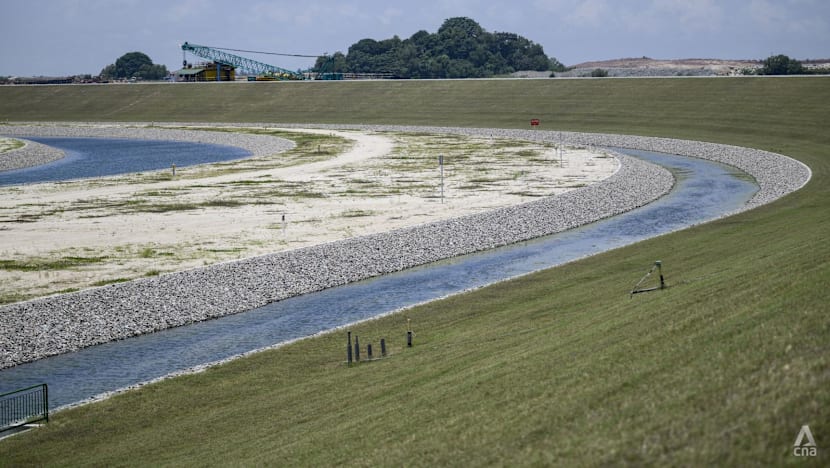
A 10km-long coastal dike along Singapore's first polder at the tip of Pulau Tekong, photographed here on Sep 3, 2025, will protect it from the sea. (Photo: CNA/Wallace Woon)

This audio is generated by an AI tool.
SINGAPORE: Singapore has completed main construction works for its first polder project, reclaiming about 800ha of land at the tip of the Pulau Tekong island off its northeastern coast.
Polders are tracts of land that lie below sea level and are reclaimed through the building of dikes, drainage canals and pumping stations.
The project - equivalent to the size of two Toa Payoh towns - was first announced by Prime Minister Lawrence Wong in 2016, when he was Minister for National Development.
Construction was completed using an empoldering method, making it the first time Singapore has reclaimed land below mean sea level, the Housing and Development Board (HDB) and national water agency PUB said in a joint media release on Monday (Sep 8).
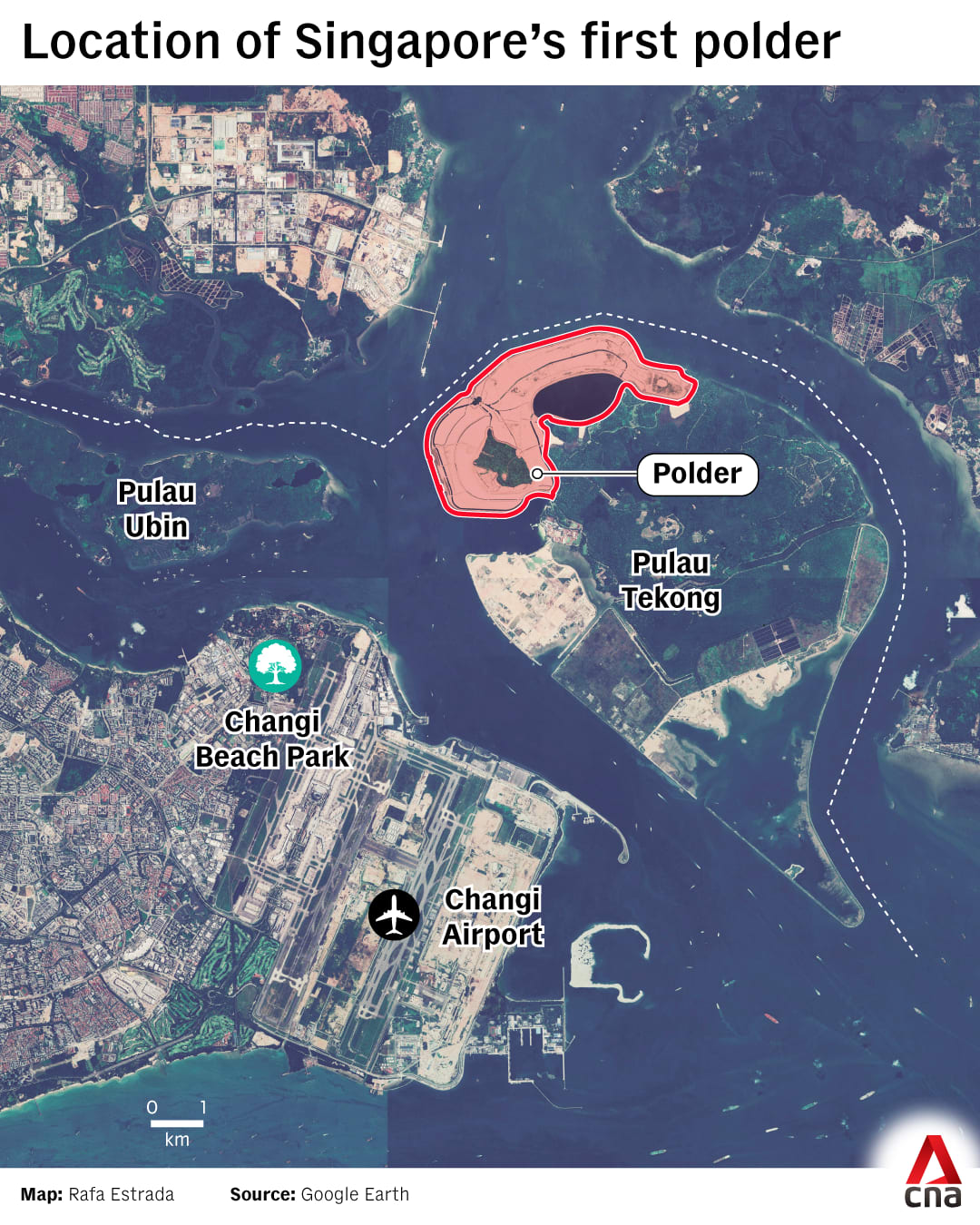
The empoldering method uses less sand compared to the traditional land reclamation process of infilling with sand.
The amount of sand used for this reclamation was reduced by close to 50 per cent as a result, the two agencies said.
The reclaimed land will be used for military training purposes, freeing up space on the mainland for other uses, such as developing new homes and other amenities, they added.
In response to CNA's queries, HDB and PUB said that while main construction works for the land and infrastructure were completed at the end of 2024, some final testing and commissioning works remain.
These include the control and monitoring system for a water management system as well as telecommunication services on the polder, which are now ongoing and will be completed later this year.
After that, HDB will hand over the polder to PUB and the Ministry of Defence.
"Hence, the exact cost of the polder and the amount of cost savings have yet to be finalised," said HDB and PUB.
"As this is Singapore’s first polder, the cost of operating and maintaining the coastal dike and water management system can only be determined after operating it for a period of time."
GUARDING AGAINST RISING SEA LEVELS
A 10km-long coastal dike, a type of barrier, has been built along the perimeter of the polder to keep seawater out. The dike can stand up to 6m above mean sea level, and its height can be raised if needed, to adapt to future increase in sea levels.
"The coastal dike was the first key infrastructure to be completed, as it was necessary to fully enclose the area being reclaimed to manage water levels within the polder," said HDB and PUB.
The dike was constructed with a mix of materials and structures. For example, the side facing the sea has a layer of natural rock to maintain its robustness; while the part facing land is covered by Bermuda grass to hold soil firmly and mitigate erosion during rain.

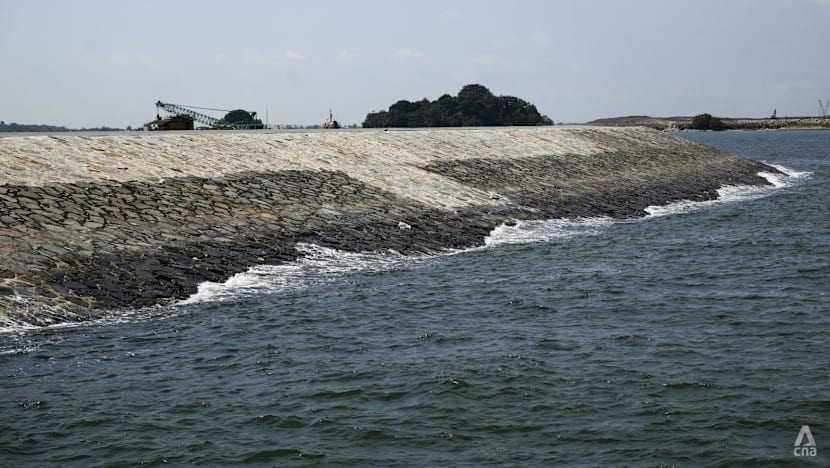
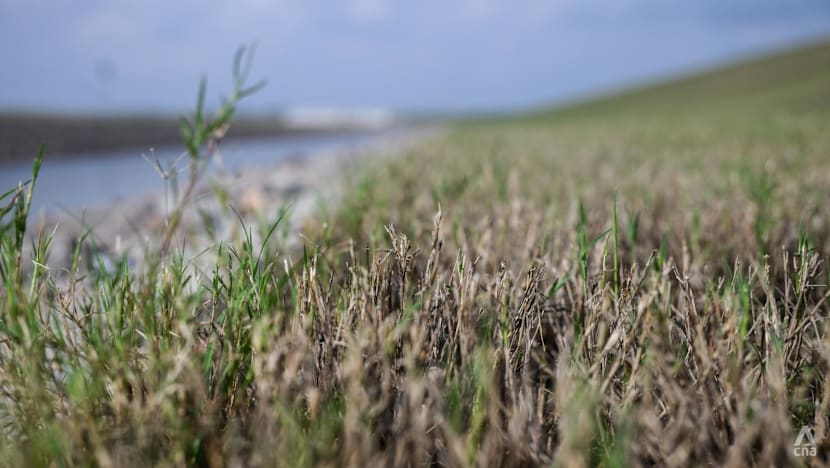
A road that runs along the entire crest or surface of the dike was also built to facilitate maintenance works. This road, together with another 21km of roads, allows vehicles to safely navigate the polder.
In designing the coastal dike and its safety provisions, HDB and PUB said they drew on the experience of the Netherlands, which has the world's highest standards for dike safety.
Since the use of polders was a "novel" approach for Singapore, the two agencies worked with Dutch experts to adapt the polder at Pulau Tekong to Singapore's context, to ensure its safety, said Ms Goh Pei Ling, deputy director for building and infrastructure at HDB.
Should flooding occur, a public warning system will be activated to alert personnel to suspend all activities and evacuate the polder, HDB and PUB told CNA.
"If any pumps fail, standby pumps will be automatically activated to take over the operation. In the event of power failure, backup generators will be activated to power the pumps," they said.
MANAGING WATER
The viability of the polder also depends on its water management system.
Given Singapore's high rainfall and the polder's low-lying nature below mean sea level, managing stormwater runoff requires "special attention" as water is unable to flow out naturally, said HDB and PUB.
As such, the polder has a 45km-long drainage network, a stormwater collection pond and two pumping stations.
The drainage network comprises more than 30 water control as well as inlet and outlet structures with gates to manage rainfall.
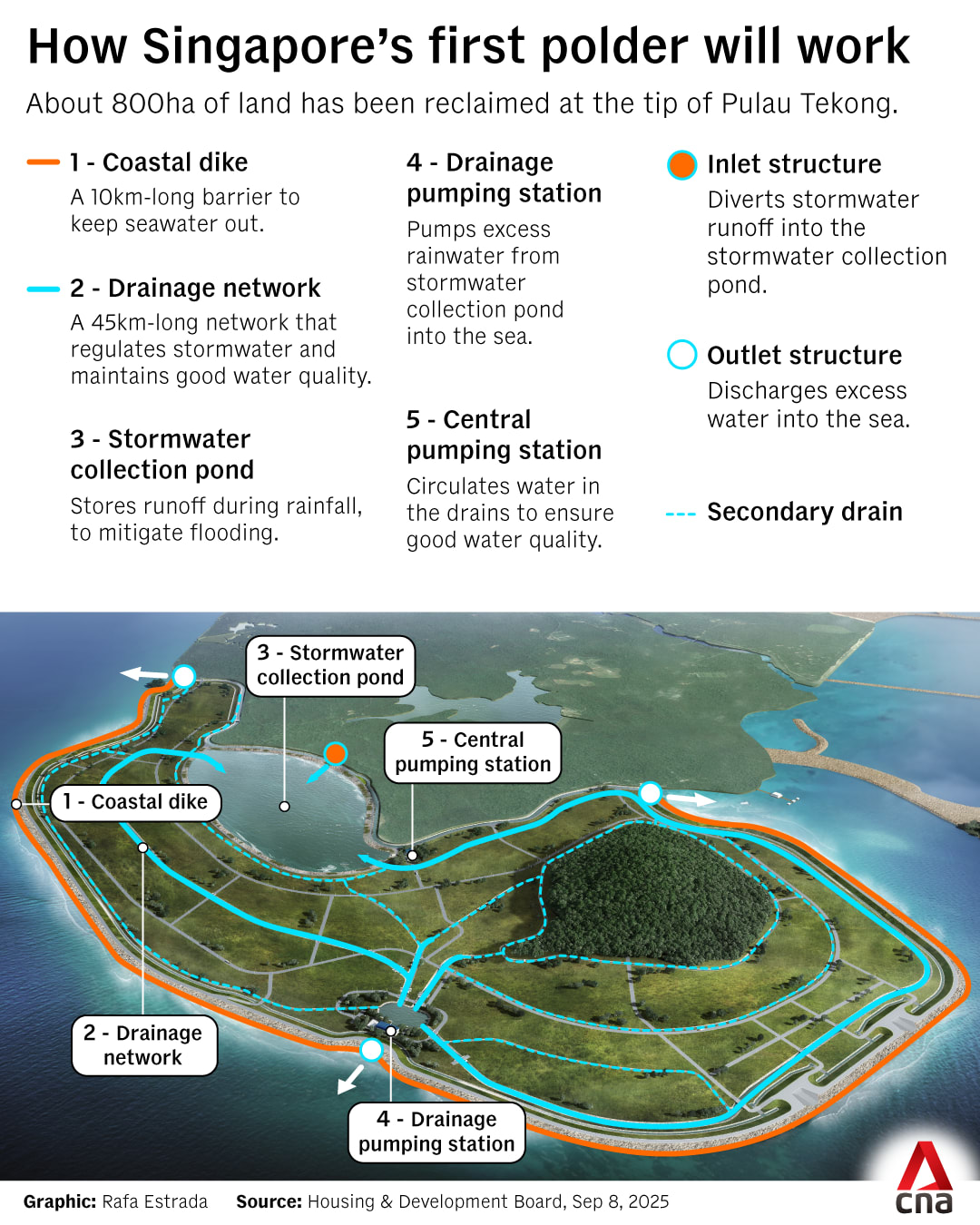
The outlet structures, which run through the coastal dike, channel excess water collected within the polder out to sea.
The inlet structures divert stormwater runoff into the collection pond.
The pond, which is 116ha in size, stores rainfall runoff to mitigate flooding within the polder. The pond is designed to hold up to 5 million cubic metres of water, the equivalent of 2,000 Olympic-sized swimming pools, said HDB and PUB.
Once the stormwater collection pond is full, excess water is then channelled to a drainage pumping station, to be released into the sea. This station is located next to the coastal dike.
A second pump, known as the central pumping station, is next to the pond and it circulates water in the drains to maintain water level and ensure good water quality.
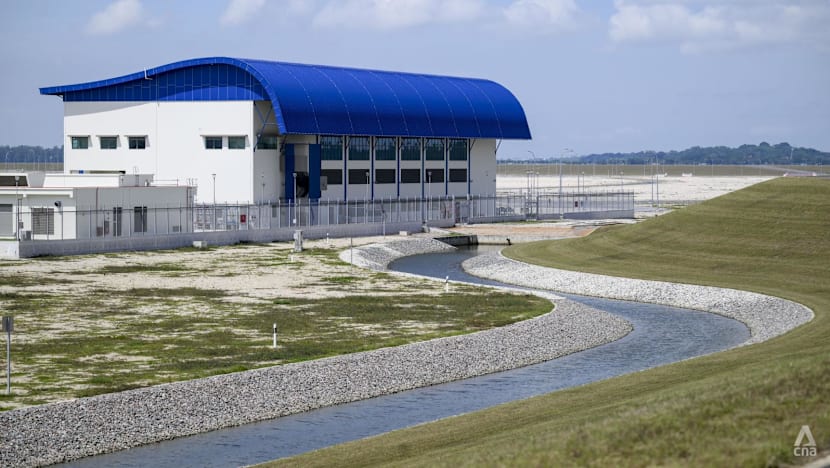
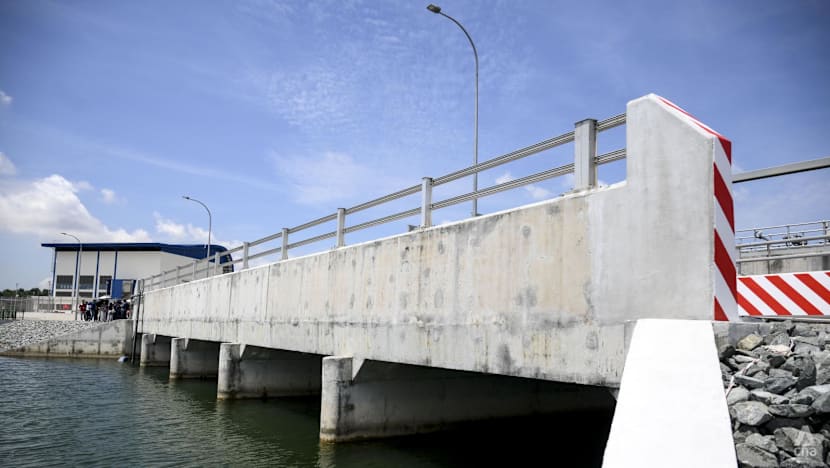

The overall drainage system is monitored and operated by PUB through a fully automated system, at an operation control centre located within the drainage pumping station.
PUB has also installed more than 170 closed-circuit television (CCTV) cameras and over 260 sensors to monitor the coastal dike, as well as the water level and quality within the drainage network, said the agency's senior principal engineer for the catchment and waterways department Thomas Pang.
This enables seamless, real-time remote operations from both the control centre at the polder and PUB's joint operations centre on mainland Singapore, he added.
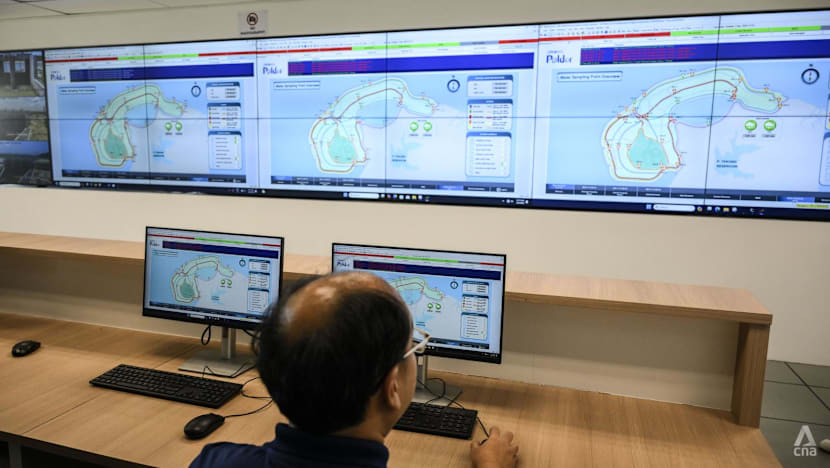
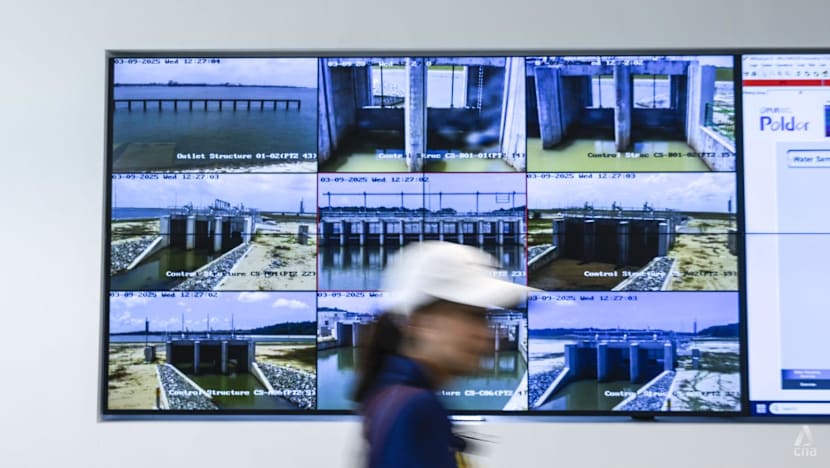
Taking on the management of Singapore's first polder was a "significant milestone" for PUB, said Mr Pang, adding that the agency had been involved since 2011 and co-chaired multi-agency committees overseeing the design and construction of the polder.
"We have gained valuable experience and deepened our capabilities required for polder management."
He added that with climate change bringing more intense rainfall and rising sea levels, the polder offers an effective solution to address both challenges.
HDB and PUB said in response to CNA's queries that the insights and experience drawn from operating and maintaining the project will guide a review of the viability of using the empoldering method in future land reclamation projects.
"Additionally, as Singapore’s coastline is highly varied, coastal protection solutions need to be tailored to the specific characteristics of each site. These will be determined through PUB’s site-specific studies to assess the most suitable approach for each location."

















